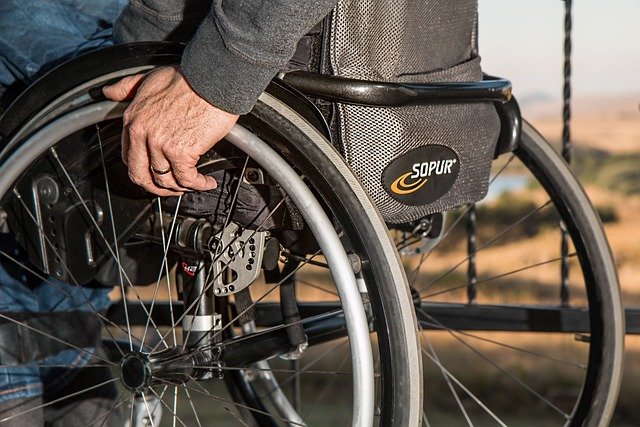Old Bronco for Sale: Practical Guide to Finding, Inspecting, and Buying Classic Broncos
The Ford Bronco has earned legendary status among off-road enthusiasts and collectors worldwide. From its debut in 1966 as a compact SUV competitor to the Jeep CJ series through its evolution into a full-size vehicle by 1996, the Bronco represents American automotive heritage at its finest. Whether you're seeking a restoration project or a weekend adventure vehicle, finding the right classic Bronco requires careful research, thorough inspection, and smart negotiation strategies.

Classic Ford Broncos have experienced remarkable appreciation in recent years, making them highly sought-after vehicles for collectors, off-road enthusiasts, and restoration hobbyists. The combination of rugged capability, iconic styling, and cultural significance has created a robust market for these American classics.
Where to Look: Online Listings, Auctions, Clubs and Local Ads
Successful Bronco hunting requires casting a wide net across multiple platforms. Online marketplaces like Hemmings Motor News, ClassicCars.com, and Bring a Trailer offer extensive inventories with detailed photographs and seller histories. eBay Motors provides both auction-style and fixed-price listings, while Facebook Marketplace and Craigslist often yield local finds at competitive prices.
Auction houses such as Barrett-Jackson, Mecum, and regional collector car auctions frequently feature restored and original Broncos. These venues offer authenticated vehicles but typically command premium prices. Bronco-specific clubs and forums like ClassicBroncos.com and Ford Bronco Zone maintain classified sections where enthusiasts sell well-maintained examples.
Local newspaper classifieds, estate sales, and word-of-mouth referrals sometimes uncover hidden gems. Rural areas often harbor barn finds and family-owned Broncos that haven’t entered the broader collector market.
Recognizing Models, Years and Factory Options (1966–1996)
Ford produced Broncos across five distinct generations, each with unique characteristics and desirability factors. First-generation Broncos (1966-1977) are the most coveted, featuring compact dimensions and distinctive styling. Key variants include the basic wagon, roadster with removable top, and pickup configurations.
Second-generation models (1978-1979) introduced larger dimensions and improved comfort but are less popular among collectors. The third through fifth generations (1980-1996) evolved into full-size SUVs with various trim levels including XL, XLT, and Eddie Bauer editions.
Factory options significantly impact value and functionality. Desirable features include the 289 V8 engine in early models, four-wheel drive systems, limited-slip differentials, and air conditioning. Documentation proving original equipment adds substantial value to any Bronco purchase.
Vehicle Inspection Checklist: Body, Frame, Drivetrain and Interior
Thorough inspection prevents costly surprises and ensures informed purchasing decisions. Begin with the body panels, checking for rust, accident damage, and previous repairs. Early Broncos are particularly susceptible to corrosion around wheel wells, door frames, and floor pans. Examine paint consistency and panel alignment for signs of bodywork.
Frame inspection requires getting underneath the vehicle to assess structural integrity. Look for rust, cracks, or modifications that might compromise safety or authenticity. Pay special attention to mounting points for suspension components and body mounts.
Drivetrain evaluation should include engine performance, transmission operation, and four-wheel drive engagement. Listen for unusual noises, check fluid conditions, and test all mechanical systems. Original engines and transmissions command higher values than replacements.
Interior condition reflects overall care and usage patterns. Examine seat wear, dashboard cracks, and gauge functionality. Original interiors in good condition are increasingly rare and valuable.
Assessing Value: Pricing Guides, Common Repairs and Negotiation Tips
Accurate valuation requires consulting multiple resources and understanding market conditions. Hagerty, NADA Classic Car Guide, and Hemmings provide baseline pricing data, but actual market values depend on condition, rarity, and documentation.
| Bronco Generation | Condition | Price Range | Common Issues |
|---|---|---|---|
| 1966-1977 (Gen 1) | Fair | $15,000-$25,000 | Rust, engine wear |
| 1966-1977 (Gen 1) | Good | $25,000-$45,000 | Minor rust, interior wear |
| 1966-1977 (Gen 1) | Excellent | $45,000-$75,000+ | Minimal issues |
| 1978-1996 (Later) | Fair | $8,000-$15,000 | Transmission, electrical |
| 1978-1996 (Later) | Good | $15,000-$30,000 | Minor mechanical issues |
| 1978-1996 (Later) | Excellent | $30,000-$50,000 | Well-maintained examples |
Prices, rates, or cost estimates mentioned in this article are based on the latest available information but may change over time. Independent research is advised before making financial decisions.
Common repair costs include engine rebuilds ($3,000-$8,000), transmission overhauls ($2,000-$4,000), and bodywork ($5,000-$15,000 for comprehensive restoration). Factor these potential expenses into purchase negotiations.
Effective negotiation requires preparation and patience. Research comparable sales, identify specific issues during inspection, and present reasonable offers based on actual market data rather than emotional attachment.
Buying Logistics: Paperwork, Shipping, Restoration Planning and Ownership Transfer
Proper documentation ensures legal ownership and preserves investment value. Verify clear title, matching VIN numbers, and any liens or encumbrances. Original build sheets, owner manuals, and service records enhance authenticity and value.
Shipping considerations include distance, vehicle condition, and transport method. Enclosed carriers protect valuable Broncos but cost more than open transport. Local purchases allow personal inspection but may limit selection.
Restoration planning should begin before purchase, establishing budgets, timelines, and scope of work. Determine whether you’ll perform work yourself or hire professionals, as this significantly impacts total investment.
Ownership transfer requires proper title work, registration, and insurance coverage. Classic car insurance often provides agreed-value coverage at lower rates than standard policies, protecting your investment while reducing costs.
Successful Bronco ownership combines passion with practical knowledge, creating rewarding experiences whether tackling weekend trails or attending car shows. With careful selection and proper preparation, a classic Bronco can provide years of enjoyment while potentially appreciating in value.




